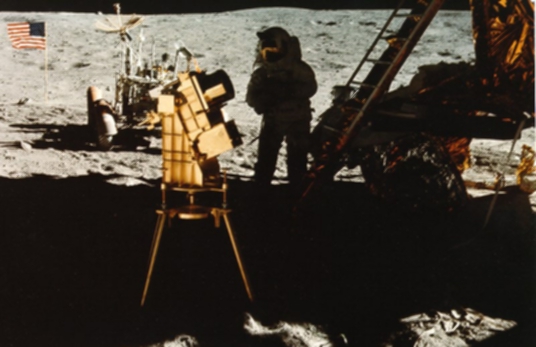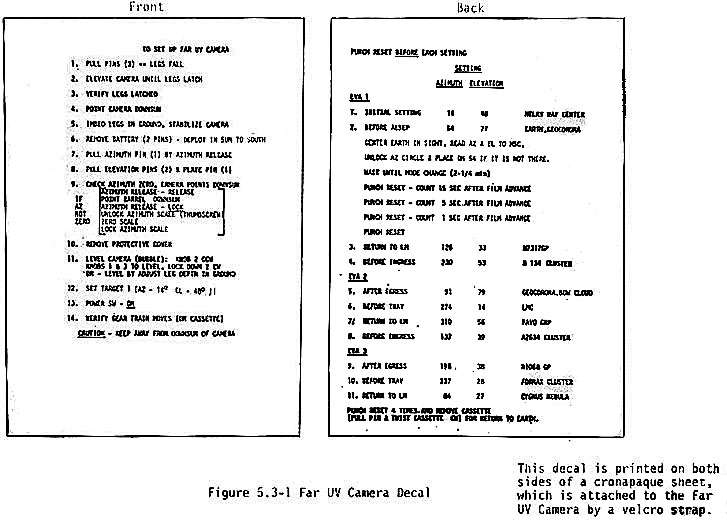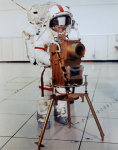



Above Left: Another view from the opposite side of the FUVC.
Canter: Decal attached to side of FUVC, detailing deployment & operation of the instrument.
Right: Photo taken with the system.



Above left – Beauty shot of the system.
Above center- John Young, Apollo 16 CDR, practices working with the camera.
Above right: FUVC on display at the NASM.
Apollo Experiment Number: S 201
Apollo Missions: 16
Wt: 22 kg
Dim: 1 x 0.5 x 0.5 m (in zipped bag, i.e. before deployment)
“Description/Purpose: A miniature observatory that acquired imagery and spectra in the far-UV range (below 1600 angstrom). An advantage of the electronographic technique used was that it was completely insensitive to visible and near-UV light. The unit was supported between two vertical stanchions on a table so that it could swing vertically from 0 deg to 90 deg. This table was supported by a tripod and could rotate 360 deg horizontally. The main instrument was an f/1.0 Schmidt camera of 7.5 cm aperture. It had a 20 deg field of view (FOV) in the imaging mode, 0.5 deg x 20 deg in the spectrographic mode. Either of two corrector plates (LiF or CaF2) could be selected for different bands of UV.
The goals of the experiment were to 1) determine composition and structure of the upper atmosphere of Earth from its spectra 2) determine the structure of the geocorona and study day and night airglow and polar aurorae 3) obtain direct evidence of intergalactic hydrogen in distant galaxy clusters 4) obtain spectra and imagery of the solar wind and other gas clouds in the solar system 5) detect gasses in the lunar atmosphere, including volcanic gasses, if any 6) obtain spectra and colors of external galaxies in the far UV 7) obtain spectra and colors of stars and nebulae in the Milky Way 8) evaluate the lunar surface as a site for future astronomical observatories.
(from: Catalog of Apollo Experiment Operations, NASA RP -1317, JSC)
This was a really neat looking instrument. It consisted of a telescope mounted on a tripod which sat in the LM shadow. It was gold plated for thermal control and, combined with John Young standing next to it, the pictures of it sitting in the LM shadow were spectacular. National Geographic magazine actually featured one of the pictures taken with this system.
NASA of course made a big noise about this being the “first observatory on the moon” or something like that. An interesting note is that the backup unit for this system was later installed on the Skylab ATM to image the comet Kahoutek.
